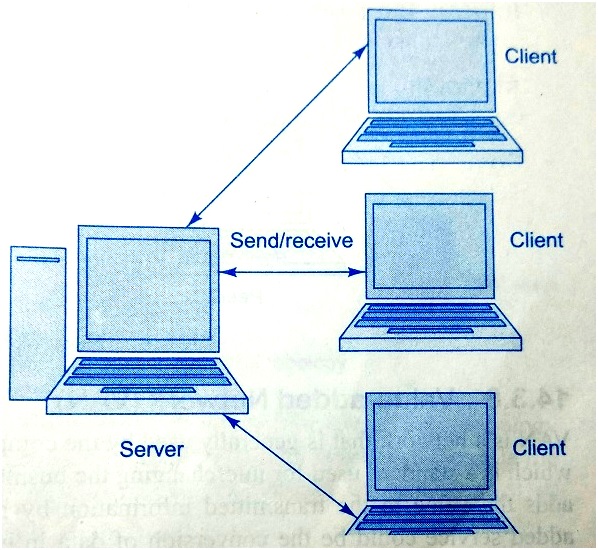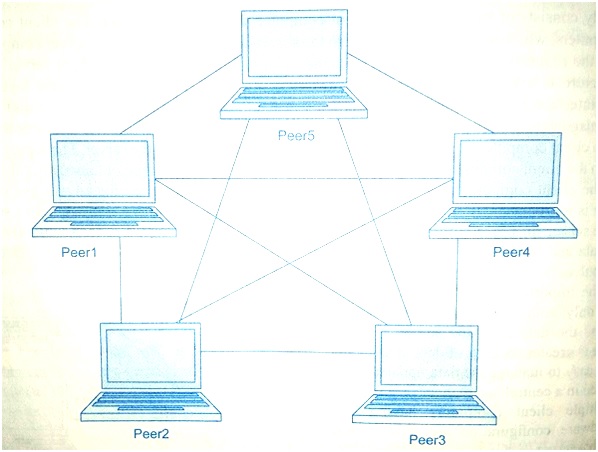Home »
Computer Network
Computer Network: What is, Types
Computer Network Introduction and Types: In this tutorial, we will learn about the computer network and its various types.
By Abhishek Jain Last updated : April 26, 2023
What is Computer Network?
Computer Network is a system of interconnected computers that enable computers to communicate with each other and share their resources, data, and applications. The physical location of each computer is tailored to personal and organizational needs. A network may include only personal computers or a mix of PCs, minis, and mainframes spanning a particular geographical area.
Types of Computer Network
The types of computer networks are divided into two categories - Based on graphical area and based on how computer nodes are used. Graphical area-based networks are Local Area Networks (LANs), Wide Area Networks (WANs), Metropolitan Area Networks (MANs), and Personal Area Network (PAN). Whereas, computer nodes-based networks are Client Server Networks (CSNs), Peer-to-Peer Networks (PPNs), and Value-added Networks (VANs). Let's discuss these types in detail.
1. Local Area Network (LAN)
LAN is a group of computers (as shown in Fig.1), that are connected in a small area such as a building, home, etc. Through this type of network, users can easily communicate with each other by sending and receiving messages. LAN is generally used for connecting two or more personal computers through some medium such as twisted pair, coaxial cable, etc. Through the number of computers connected in a LAN is limited, the data is transferred at an extremely faster rate.

Fig.1
2. Wide Area Network (WAN)
WAN is a group of computers that are connected in a large area such as continent, country, etc. WAN is generally used for connecting two or more LANs through some medium such as leased telephone lines, microwaves, etc. In WAN, data is transferred at slow rate. A typical WAN network is shown in Fig .2.

Fig.2
3. Metropolitan Area Network (MAN)
MAN is a network of computers that covers a large area like city. The size of the MAN generally lies between LAN and WAN, typically covering a distance of 5 km to 50 km. The geographical area covered by MAN is comparatively larger than LAN but smaller than WAN. MAN is generally owned by private organizations. MAN is generally connected with the help of optical fibers, copper wires etc.
One of the most common examples of MAN is cable television network within a city as shown in Fig.3. A network device known as router is used to connect the LANs together. The router directs the information packets to the desired destination.

Fig.3
4. Personal Area Network (PAN)
PAN is the interconnection of information technology devices within the range of an individual person, typically within a range of 10 meters.
For Example: a person traveling with a laptop, a personal digital assistant (PDA), and a portable printer could interconnect them without having to plug anything in, using some form of wireless technology such as WiFi. Typically, this kind of personal area network could also be interconnected without wires to the Internet or other networks. You can use PAN networks to transfer files including email and calendar appointments, digital photos and music etc from your portable devices such as phones and tablets to PC and vice versa.

Fig.4
5. Client Server Network (CSN)
CSN basically consists of two computers, client computer and server computer. The client computers are dummy computers, which simply send requests to the server computers, whereas the server computers receive and execute the requests sent by the client computer. CSN is also known as the client server architecture. This architecture is a two-tier architecture, which is divided into two layers. The first layer comprises of the user interface that is located on the client’s desktop.On the other hand, the second layer is the database management layer, which is located on the server machine so as to provide service to the clients.
In CSN, a client computer sends a request related to processing of data to the server. The server receives the request from the client computer and processes the data.It then sends the output obtained after the processing of data to the client computer as a response to its request.

The following are the advantages of the CSN:
- There is a proper distribution of computing tasks. The task of the client computer is to send request to the server for processing of data. The server receives the request of the client computer, processes the data and sends the result back to the client computer.
- All the important data is stored on the server and only authorized persons are allowed to access the data from the server. As a result, there is greater security of data in a CSN.
- It is easy to manage the data updates as data is stored in a centralized manner on a server.
- Multiple client computers having varying hardware configuration are able to interact with a server.
The following are the disadvantages of the CSN:
- If the server crashes, the complete network breaks down.
- The load on the server increases in a CSN because there are multiple clients sending some request to a server. As a result, the network traffic increases and network congestion occurs.
6. Peer-to-Peer Network (PPN)
In PPN, there is no separate division as clients and servers. Every computer in the PPN is treated equally and can send as well as receive the messages directly. PPN architecture cannot work under heavy load. This type of architecture is commonly used for file sharing and chatting in real time. Computers connected in this network can easily share their resources with the other components. PPN is used in a variety of fields such as business, education, telecommunications, military etc.

The advantages of PPN are as follows:
- PPN is relatively cheaper than the CSN, as the centralized server is not required.
- PPN is simpler than the CSN because computers connected in the network can communicate efficiently with each other.
The following are the disadvantages of the PPN:
- PPN is less secure because message flows freely between the computers.
- PPN is decentralized as there is no specific space for the storage of files.
- PPN is less expandable as performed and speed of network degrades when more computers are added.
7. Value Added Network (VAN)
VAN is a network that is generally used by the companies privately for Electronic Data Interchange (EDI), which is a standard used for interchanging the business data. In other words, VAN is a network that usually adds the value to the transmitted information by providing value-added services. An example of value added service could be the conversion of data in Extensible Markup Language (XML) to EDI provided through VAN to specific companies.
Apart from providing value-added services, VAN also provides the auto error detection and correction and protocol conversion services for data modification. Error detection and correction is a technique used for detecting the errors in the transmitted data and then rectifying it. On the other hand, protocol conversion is basically used for converting a message, which has been transferred using a specific protocol to another protocol with the help of protocol converter.
Advertisement
Advertisement